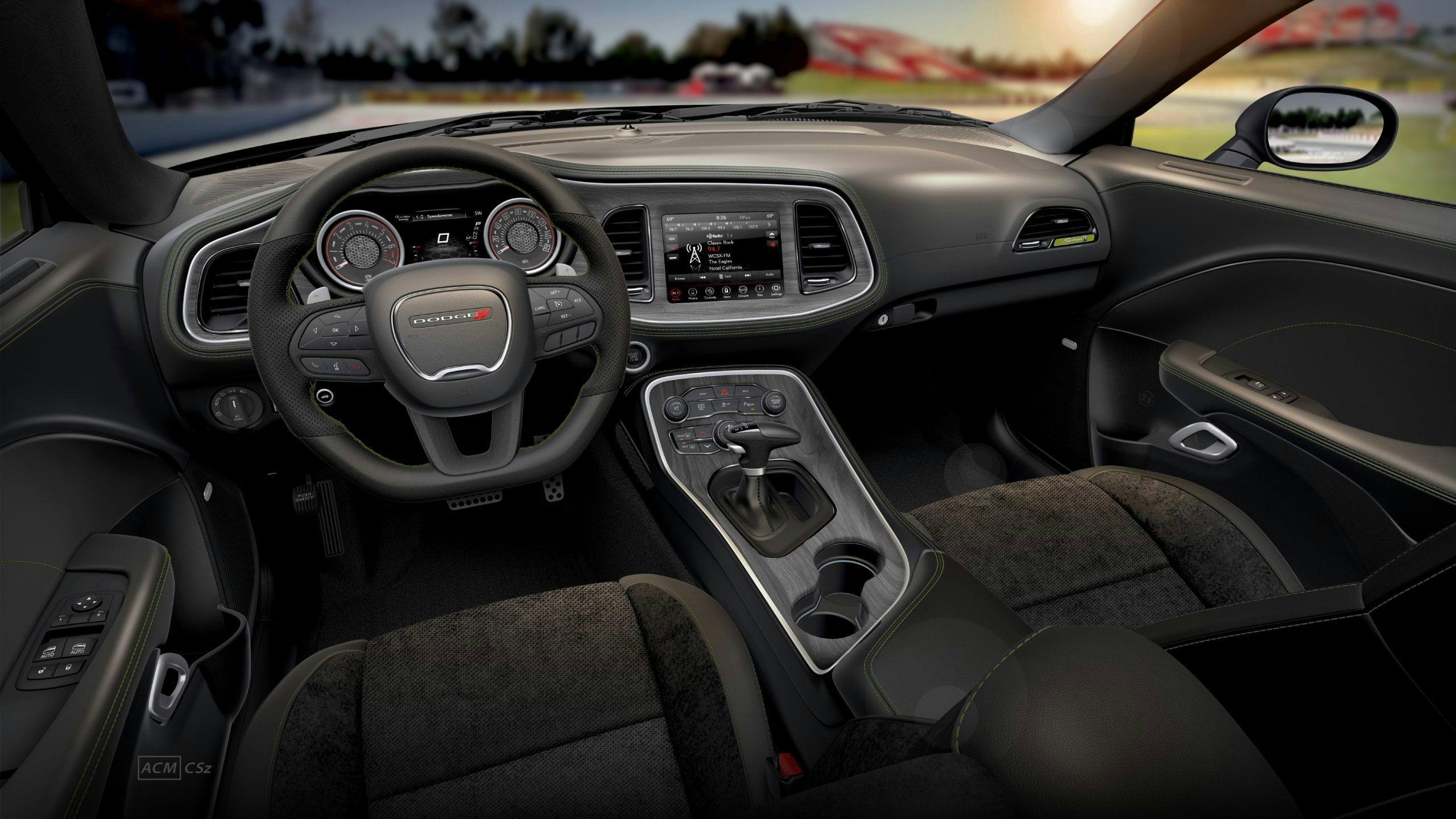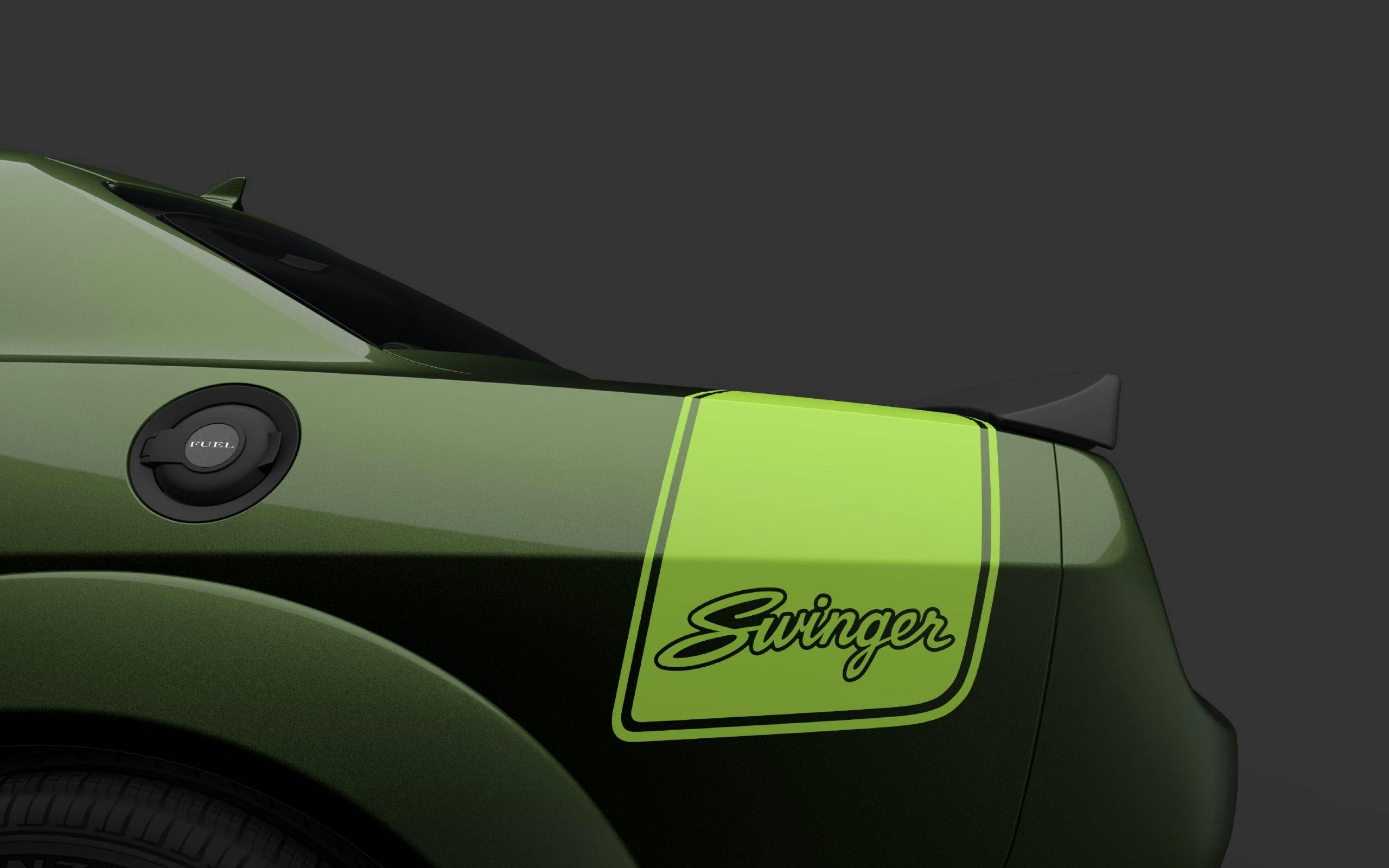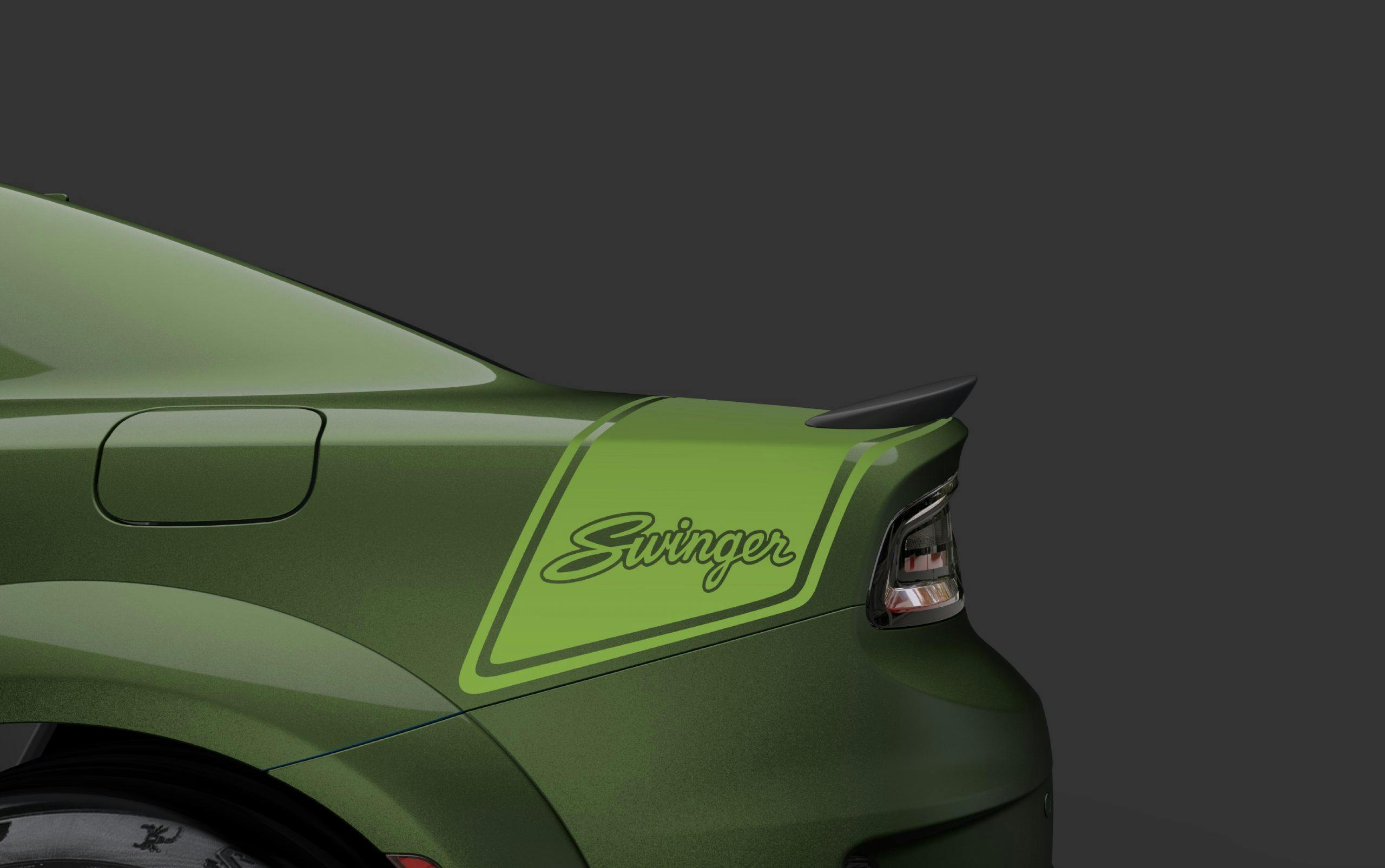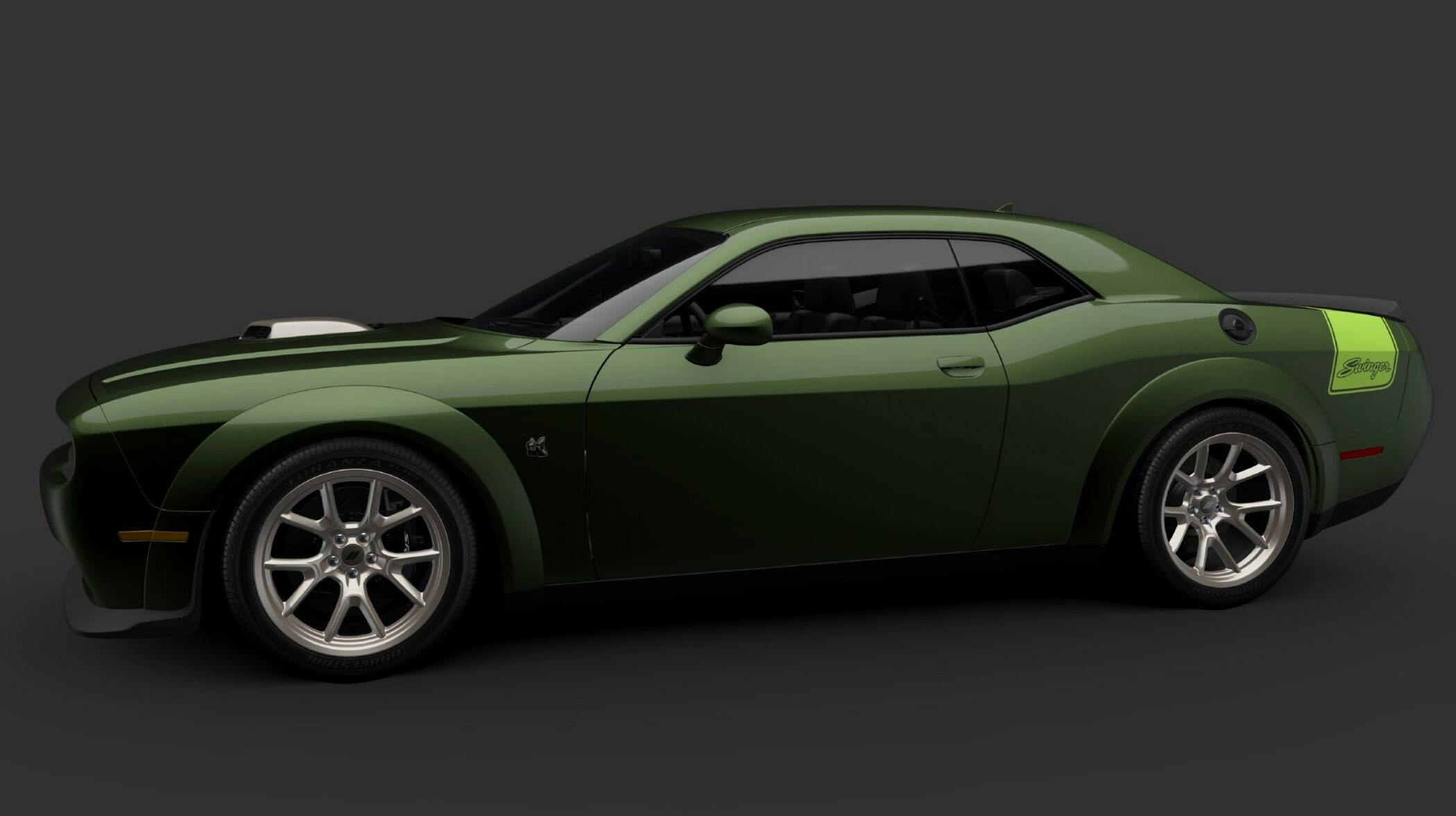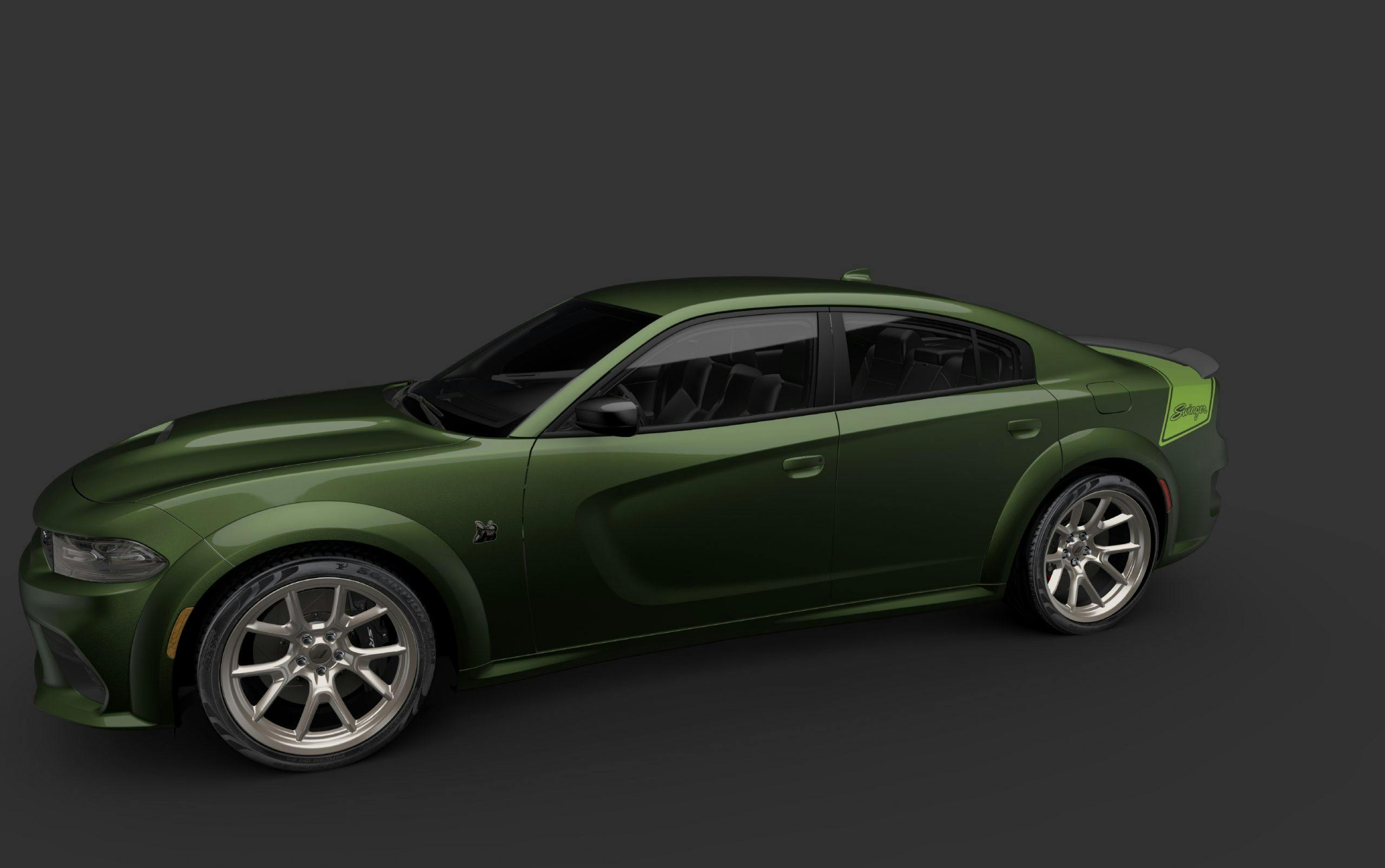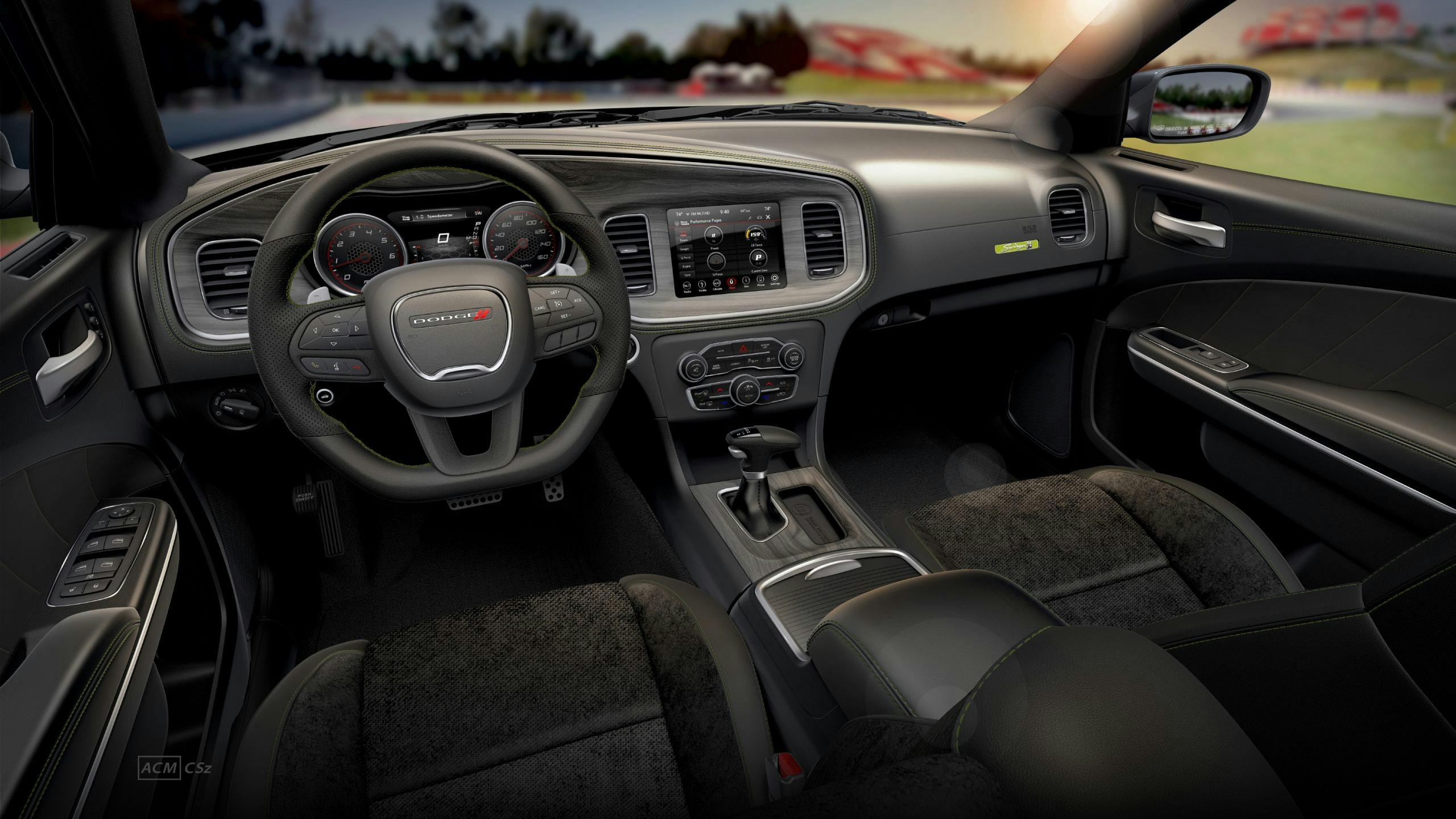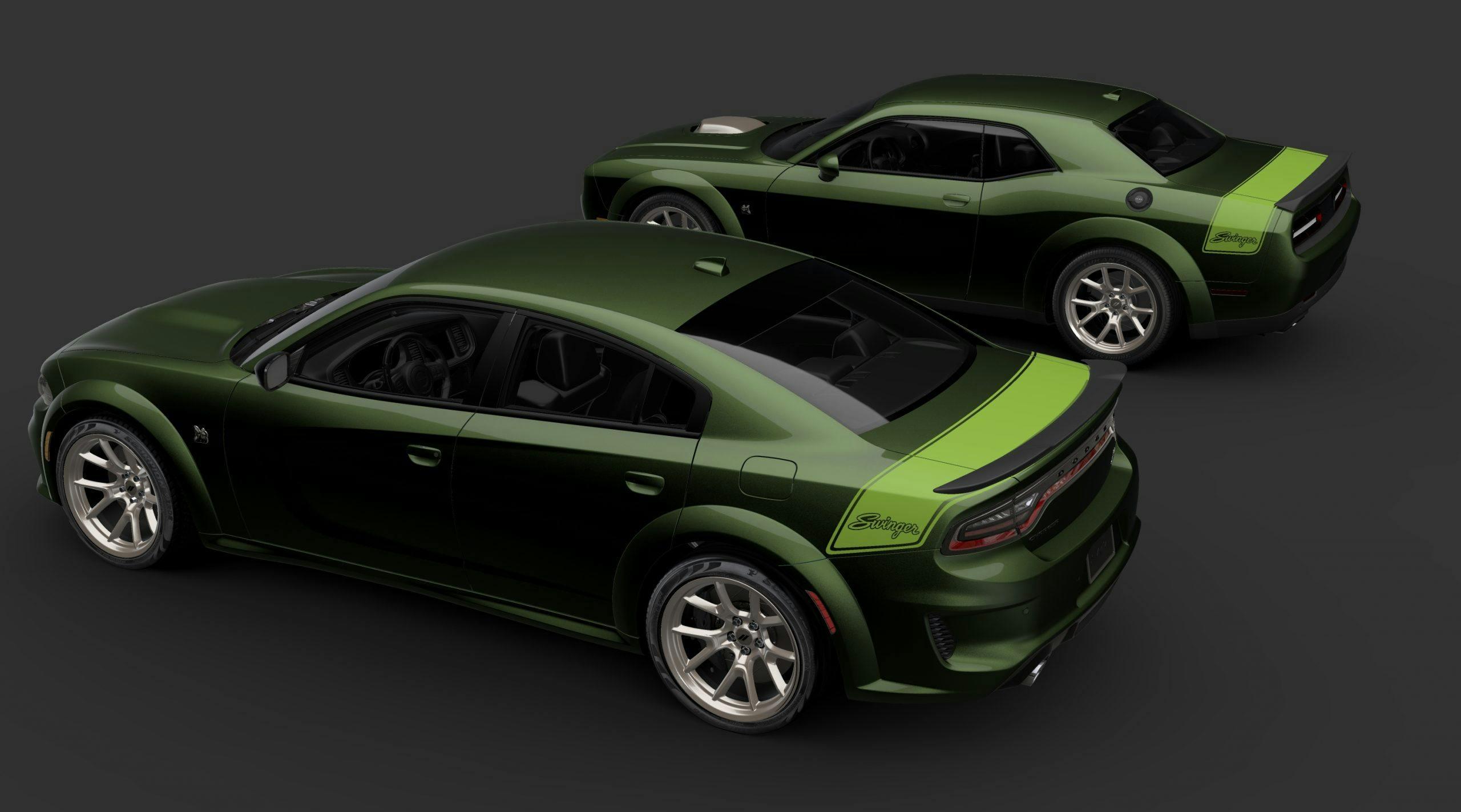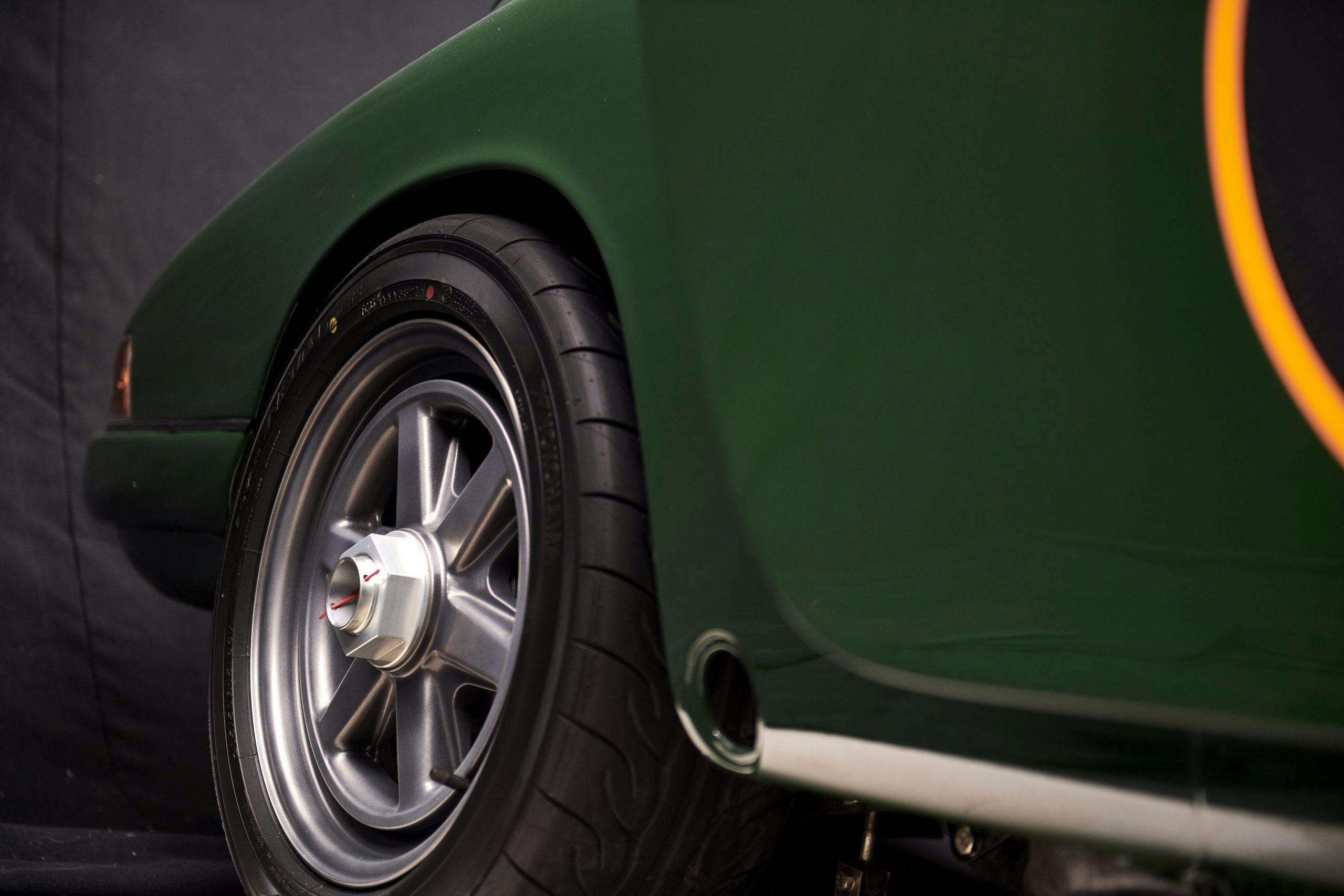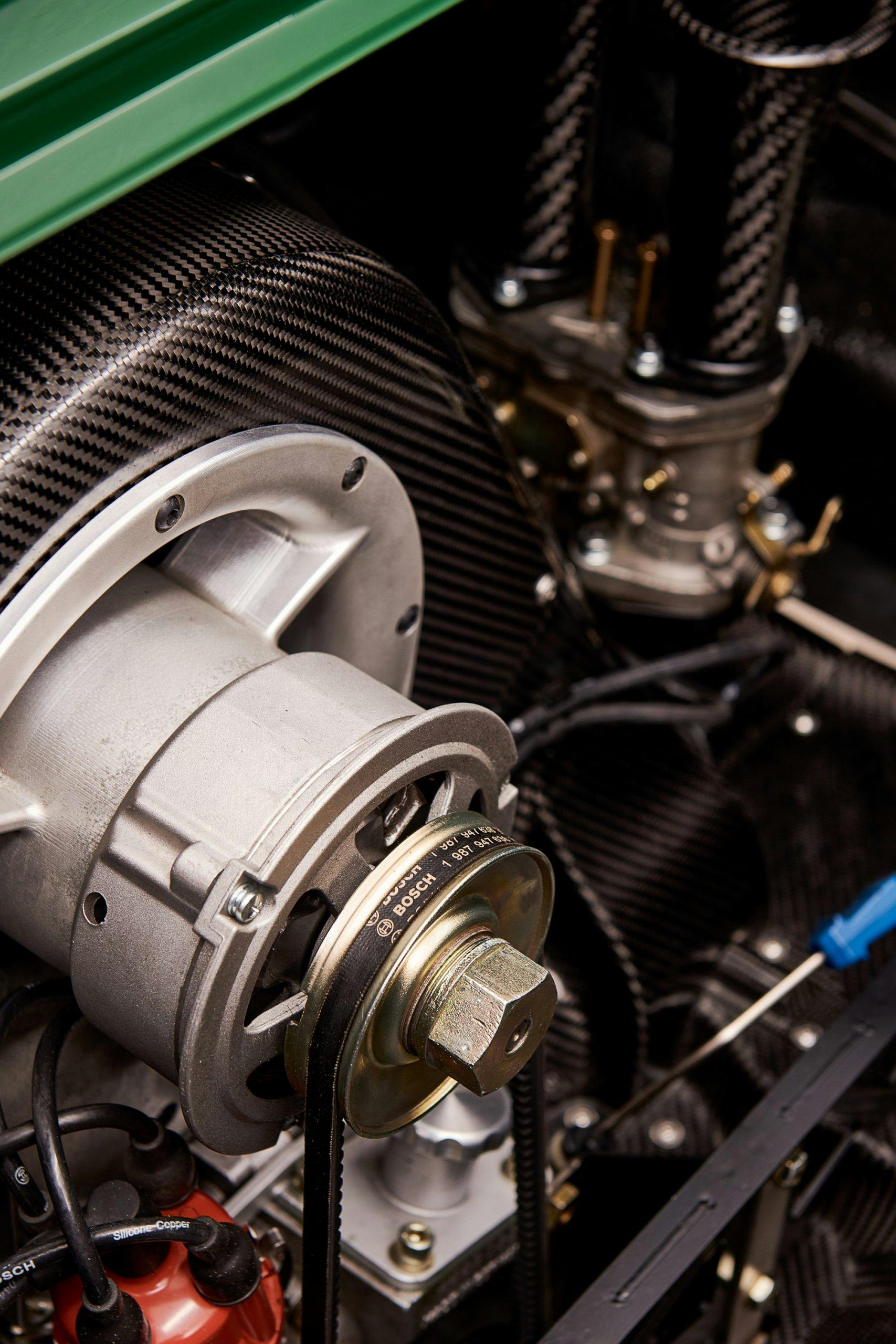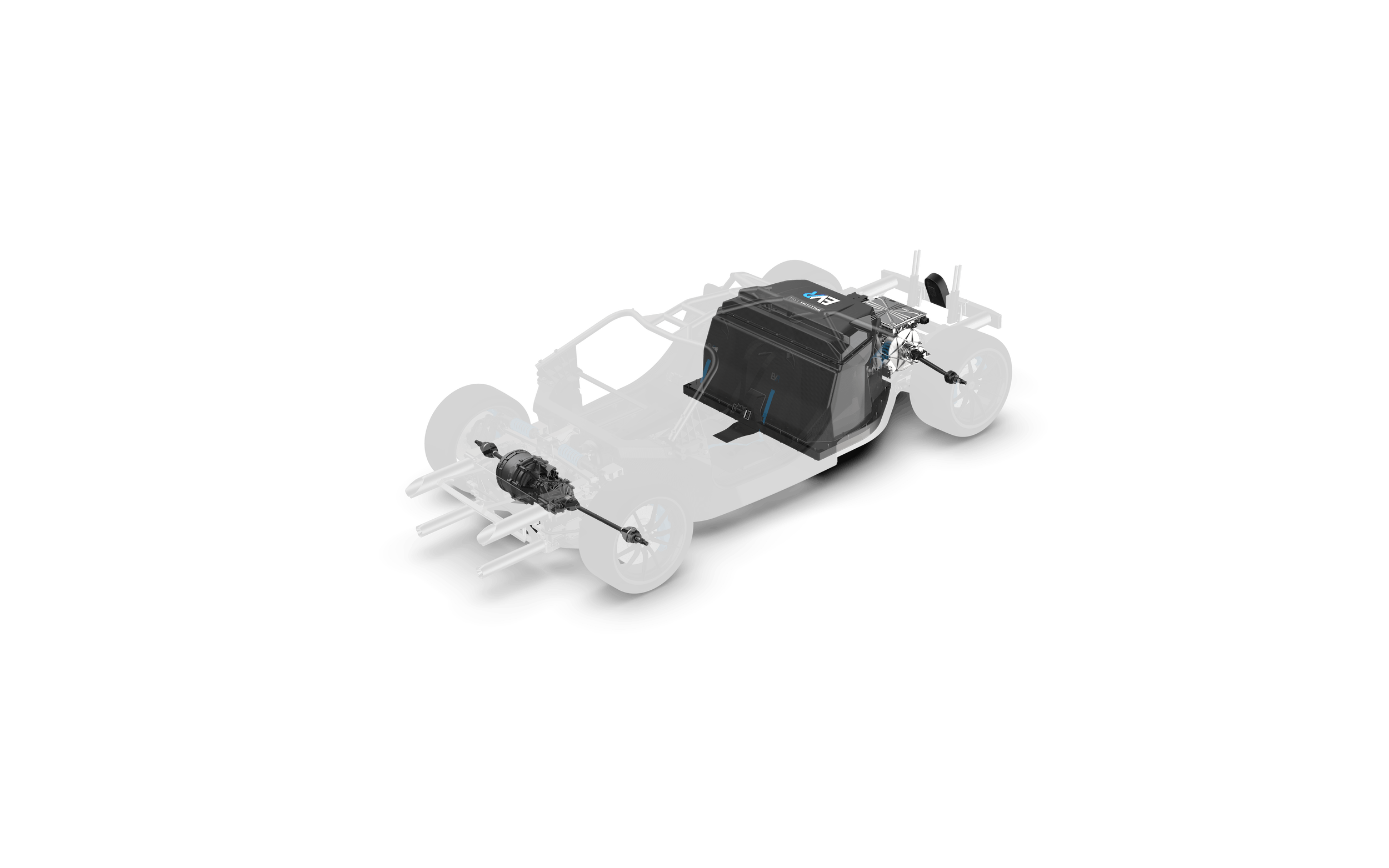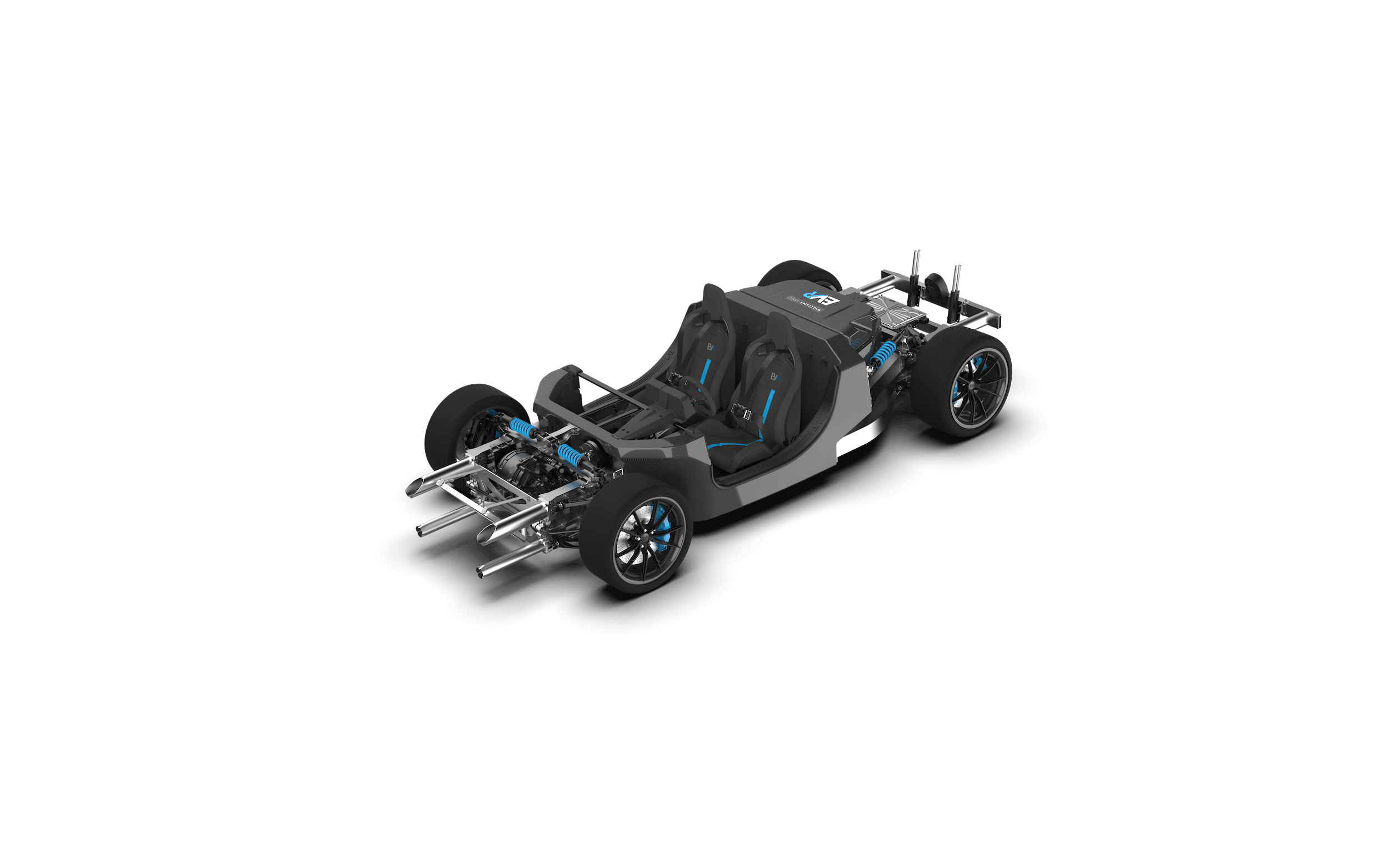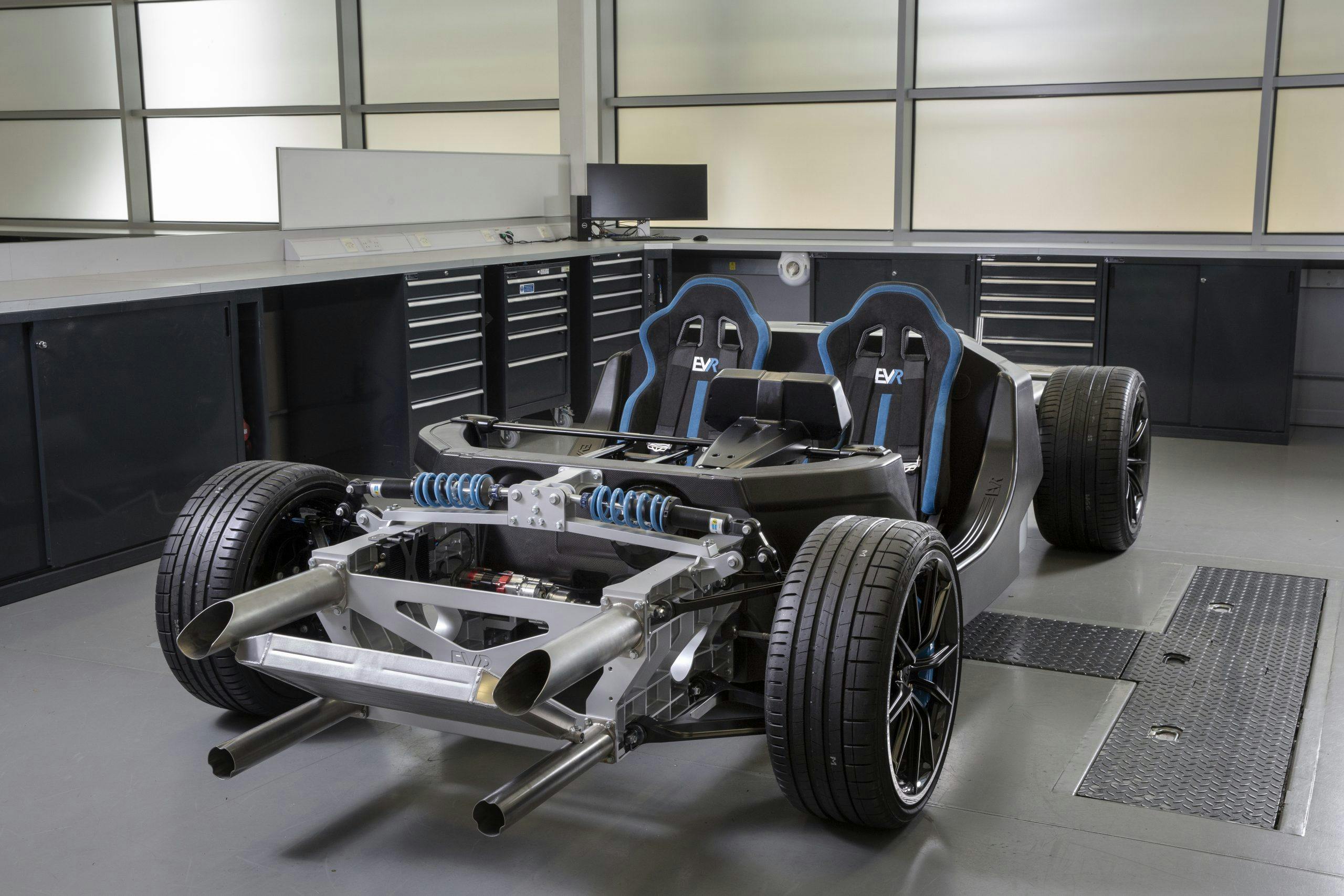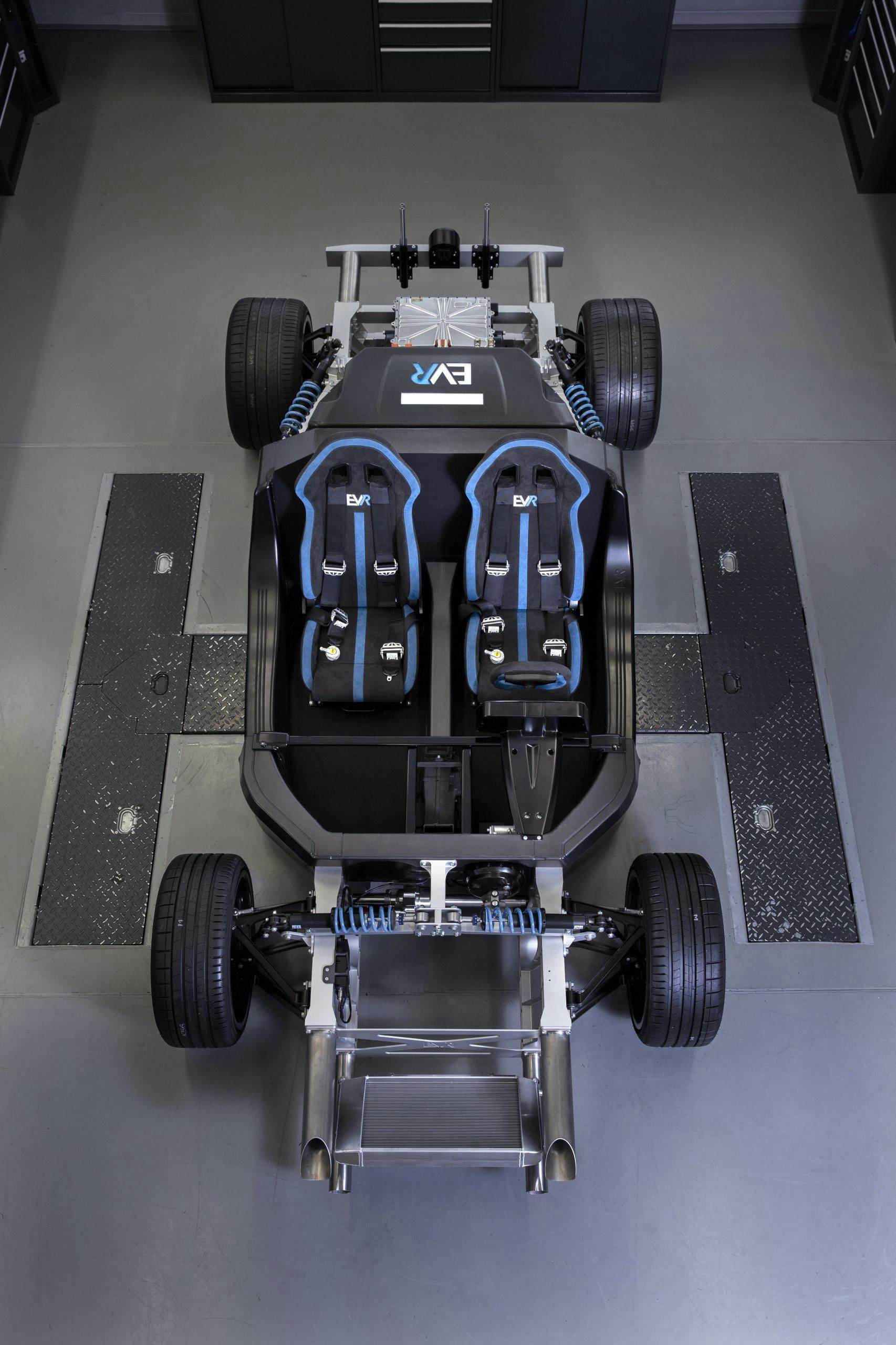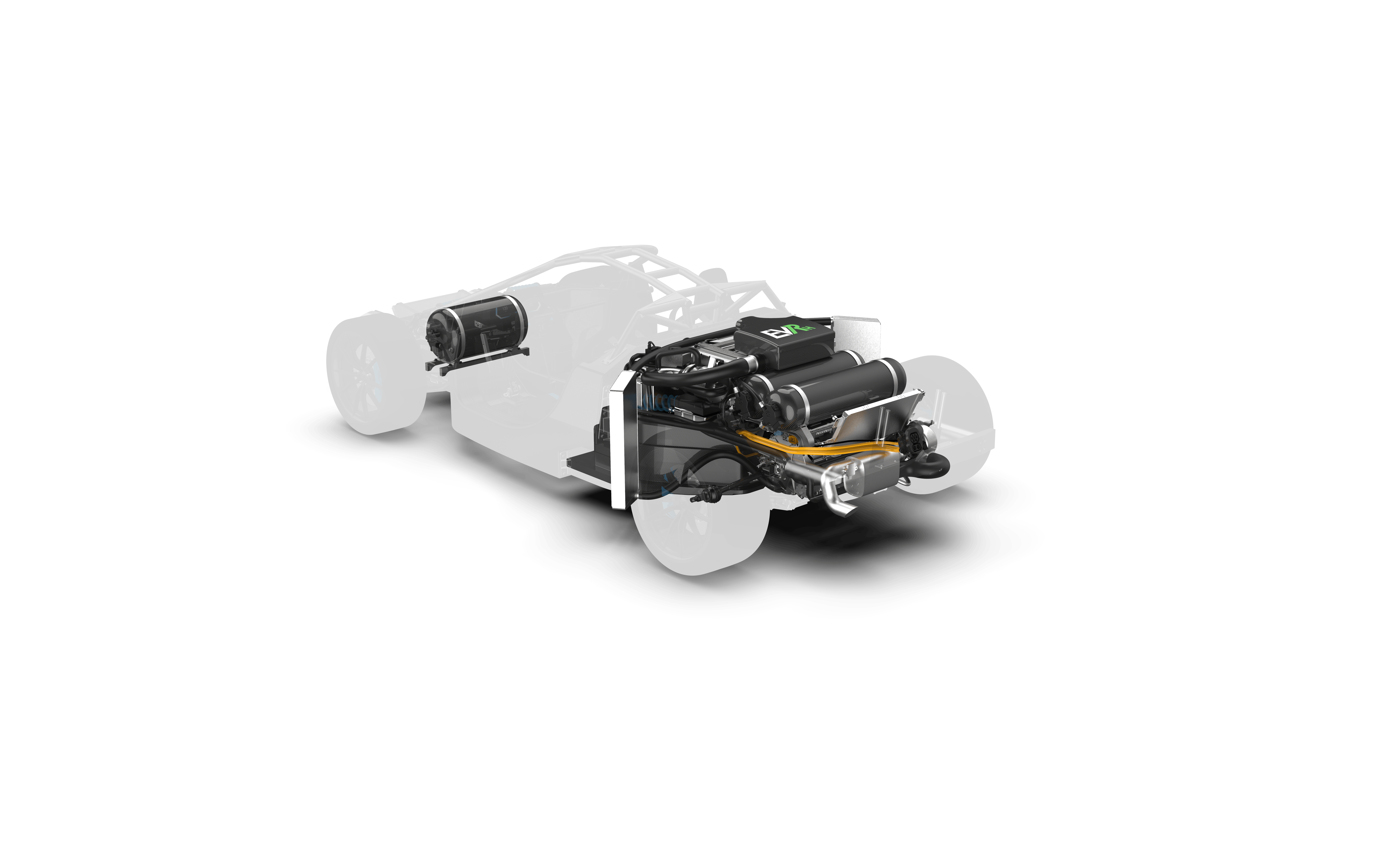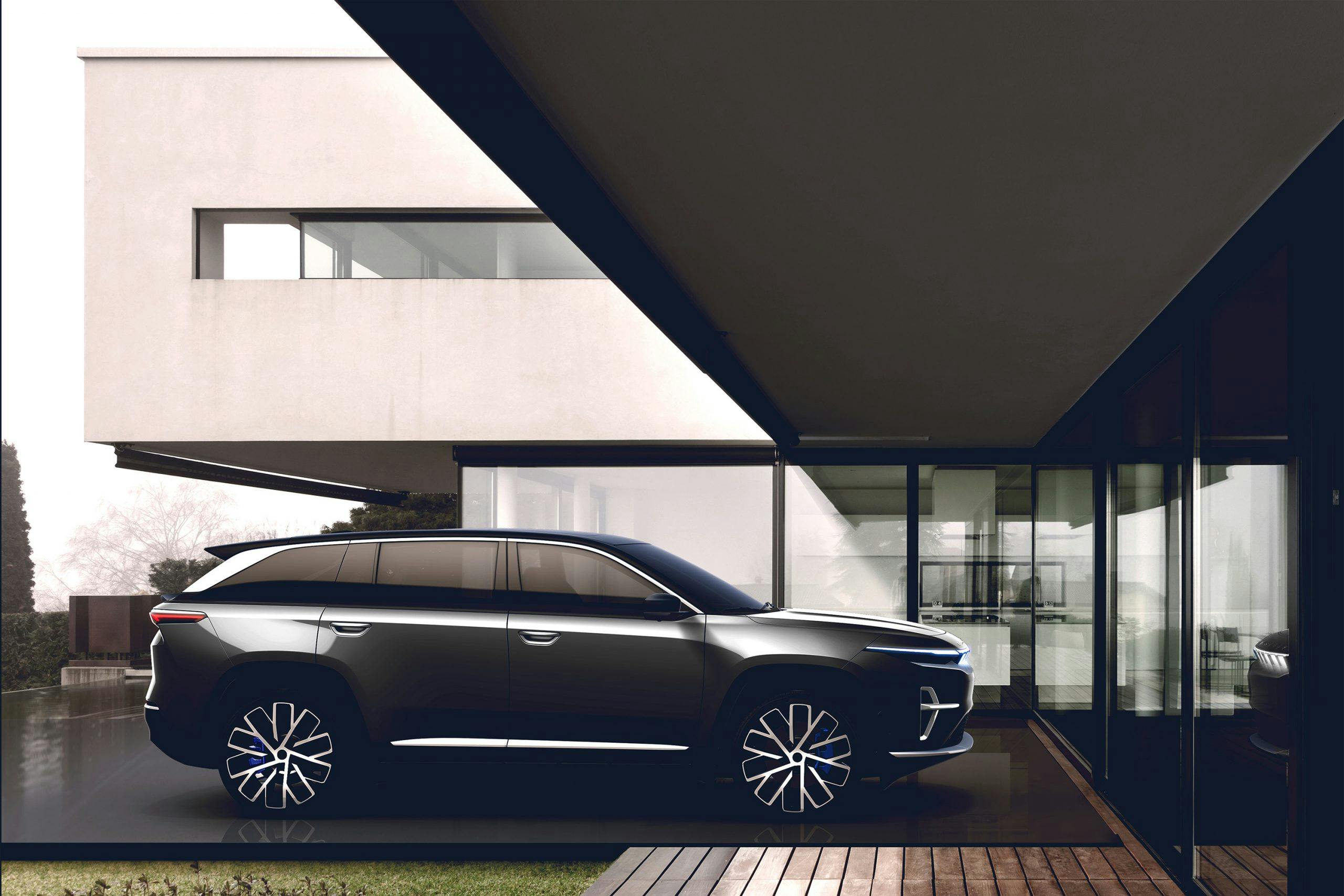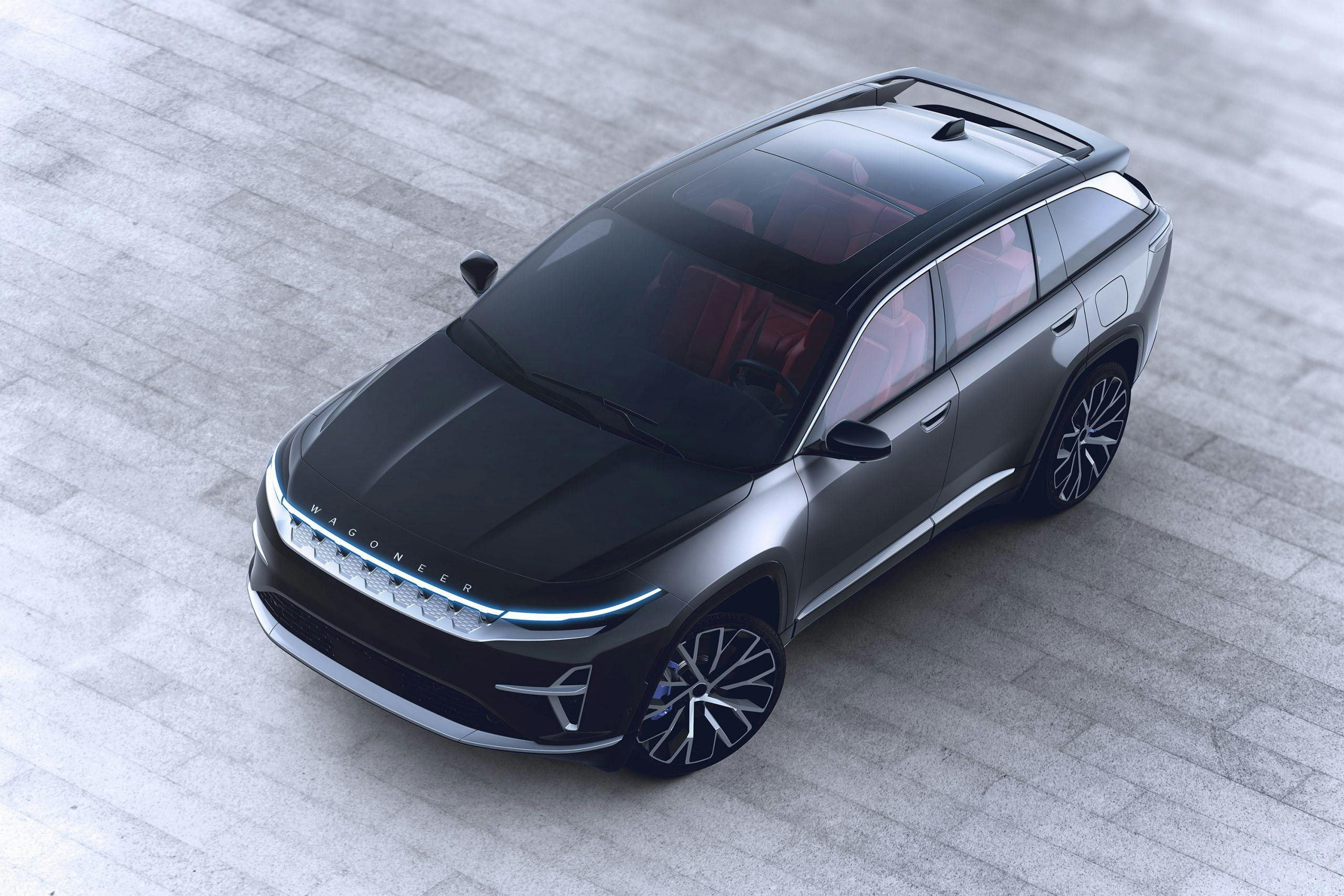Media | Articles
Dodge resurrects Swinger name, Williams’ 2000-hp rolling EV chassis, electric Wagoneer

Swinger returns to Mopar as gold-wheel, big-brake package
Intake: With 2023 marking the end of the Hemi V-8, Dodge is giving the mighty engines a proper sendoff with seven special “Last Call” editions. The third and fourth of those have just been shown: the 2023 Challenger Swinger and 2023 Charger Swinger. (ICYMI, here are the first and second, the Super Bee and the Shakedown.) The special models are homages to the Dart Swinger that debuted for 1970. These 2023 versions will be available only in widebody, Scat Pack form, and only 1000 of each model will be built. Buyers can choose between F8 Green, Sublime Green, or White Knuckle, but each car will feature Gold School badging and wheels along with green graphics across the decklid and tops of the quarter panels along with interior badging and Mod Grain–simulated wood gauge bezels. Six-piston Brembo brakes are also part of the package, which appear to be cribbed from the Hellcat parts bin.
Exhaust: F8 Green is one of our favorite current Mopar muscle colors, so we dig the overall look of the pair of cars shown here. Aside from the green and gold combo, which may be a bit polarizing, there’s nothing too wild about this Swinger package. If that’s not your bag, there’s always the White Knuckle option. The brakes are a nice addition, but if this was the special-edition that Dodge teased a few weeks ago at M1 Concourse via a funky, flower-patterned car cover, and we think it is, we were sort of expecting some wild Mod Top fabric to make an appearance. —Brandan Gillogly
Hungary for a 912 restomod?

Intake: Having long suffered a reputation as the poor man’s 911, the 912 is receiving some serious love from Budapest-based KAMM Manufaktur. The KAMM 912c features an all-carbon body and Lexan windows to minimize mass and give it a sleek, seamless style. Underneath, the chassis and powertrain are completely refreshed, with the highlight being a 170-hp two-liter flat-four motor built by Swiss specialists JPS Aircooled. Redlining at 7200 rpm, the boxer engine also benefits from a 10.5:1 compression ratio, a Weber 44IDF carburetor, 123 electronic ignition, a stainless-steel exhaust, and KAMM’s own carbon Carrera cooling. The gearbox is a 901/2 five-speed manual with a dogleg first, complemented by a ZF limited slip differential and a Porsche aluminum racing clutch. Suspension is by adjustable coilovers and brakes are a combination of 964 discs on the front and Brembo units at the rear. A hydraulic handbrake is present for sideways shenanigans. Centerlock, three-piece alloy wheels shod with Yokohama AD08RS tires provide the car-to-asphalt contact. Inside there are carbon-fiber seats, carbon trim, a Tilton pedal box, and electric air-conditioning to keep you cool. Production is due to begin in 2023 with prices beginning at €325,000 ($324,000).
Exhaust: There’s no shortage of choice if you fancy a restomodded 911. Singer, Theon Design, Tuthill and even the electricians at Everrati all offer variations on the theme, so it’s good to see the 912 getting some love. Weighing in at just 1650 pounds and boasting a a revvy flat-four that packs far more punch than Porsche ever planned, this looks like a very interesting alternative. —Nik Berg
Build your own 2000-hp hypercar on Williams’ modular platform

Intake: Williams Advanced Engineering (WAE) has come up with a modular electric vehicle platform that can handle as much as 2212 hp and already has its first hypercar customer. Known as the EVR, the composite structure opts for a battery pack mounted behind the occupants instead of a skateboard-style setup. Though the affair is far from featherweight, this arrangement provides a weight distribution more akin to that of a mid-engined car and, importantly allows the driver and passenger to have a low-slung driving position. An 85-kWh battery pack provides a range of up to 280 miles, although if you indulge the sub-two-second 0-60 mph or 248-mph top speed you won’t be able to travel nearly as far. You can do so en plein air, if you like, since the rigidity of the central tub supports either an open, targa-style or fixed-roof constructions. Rear- or all-wheel drive are both offered, with Williams providing both advanced torque-vectoring and battery management systems. Williams will provide the EVR as a rolling chassis, as it has done for Austrian startup Deus. Alternatively, the company says it can deliver a full production vehicle for a client within two years. As part of Williams Grand Prix Engineering Group, WAE has already collaborated with a boutique design firm—Singer Vehicle Design, on its Dynamics and Lightweighting Study—so it should be well prepared.
Marketplace
Buy and sell classics with confidence
Exhaust: This looks like a smart move for the Formula 1 spin-off as platform sharing in the brave new world of EVs could spawn a whole new crop of crazy cars based on Williams technology. All a start-up needs to do is drop a body on this rolling chassis. Then, of course, there’s the small matter of selling the thing. —NB
Due in 2024, Wagoneer EV will be much smaller than ICE siblings
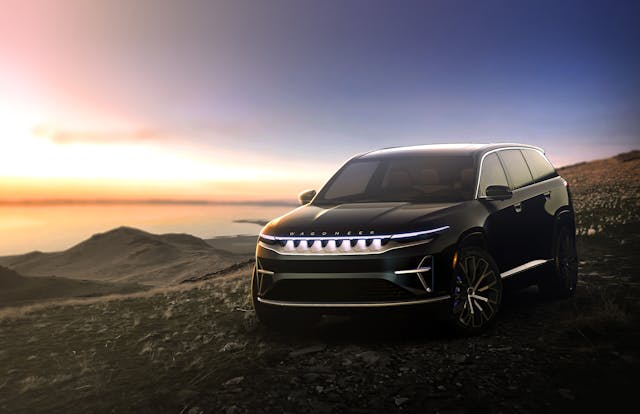
Intake: Amid the slew of announcements that arrived this morning as part of Jeep’s 4xe day, a catch-all for the various pillars of the brand’s next steps toward electrification, the all-new Recon EV is likely to steal many headlines and lead photos. But it’s the other North American-bound offering, the all-new mid-size SUV from Wagoneer, Jeep’s premium sub-brand, that might prove more influential. “Code-named” the Wagoneer S—that name may or may not change—this all-electric ritz box boasts sharp character lines, a more compact footprint than any of its body-on-frame siblings, and some serious shove. The Wagoneer S will ride on Stellantis’ new STLA Large platform, one of four dedicated EV platforms that will underpin the conglomerate’s slew of forthcoming EVs. (Stellantis has announced 75 new BEVs by 2030.) The numbers game reads like so: Targeted 400 miles of range on a single charge, 600 hp, and a 0–60 time of around 3.5 seconds, thanks to four driven wheels. That acceleration figure puts the Wagoneer S on par with the Hellcat-powered Grand Cherokee Trackhawk.
Style-wise, the Wagoneer S is a far more angular affair than its siblings, and probably better for it. The current Wagoneer and Grand Wagoneer twins are “inspired by architecture” and look rather like posh apartment complexes from some angles. Not so here. An angled D-pillar helps scallop the rear of the car, while a hanging rear wing extends the roofline beyond the rear glass and helps with aerodynamic efficiency, according to Jeep. The forward-canted seven-slot grille ditches the rectangles for textured, trapezoidal inserts that catch light emanating from the LED strip across the whole front grille. Jeep says the Wagoneer S will be unveiled in the flesh sometime next year, and that production will start in North America sometime in 2024 for the North American market as well as in other European ones. Reservations will open early next year.
Exhaust: At long last, the Wagoneer nameplate will stand for something other than “big” or, in the case of the newly announced, extended-wheelbase Wagoneer L and Grand Wagoneer L, “bigger.” The Wagoneer S looks like a stylish offering that might pry a few customers away from existing electric SUVs like the Audi e-Tron, Tesla Model Y, or even Mercedes-Benz EQS SUV. There’s a lot we still don’t know, but Jeep has assured us that more details will surface soon. Consider us intrigued.—Nathan Petroelje

